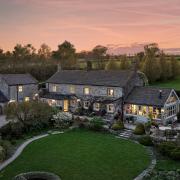It's not quite Goole on Sea, but Chris Titley sails majestically into Britain's most inland port and is fascinated by the place and charmed by its people
There's something wonderfully surreal about Goole. One moment you are driving your car past fields and houses, the next you're overtaking a great hulking ship.
A double take out of the side window confirms it: yes, you are gliding past a vast bulk carrier as it sits in the dock waiting to return to who-knows-where. Imagination then transports you on to the vessel's bow, as the proud weather-beaten skipper stoically leading another perilous expedition across the oceans, and you miss your turning.
Goole has that pleasantly unsettling effect. Traversing earth and water, it's neither coastal nor landlocked, but in a place all of its own. If you wanted a word to describe the slightly odd feeling of half-walking, half-floating around this singular town, it's very, well, Goolish.
With its centenary clock tower, bustling Boothferry Road, pedestrianised shopping centre and handsome Victorian brick buildings, it has a very down-to-earth Yorkshireness about it. Yet no other patch of sky is quite like that over Goole, with its cranes, the 'salt and pepper pot' water towers and church spire.
More than anything though, this is a place that works on water. The land only became inhabitable when the River Don was diverted into the Ouse at the behest of Charles I. That feat of engineering also enabled small barges laden with Yorkshire coal to navigate to the sea along what became known as the Dutch River, in tribute to Cornelius Vermuyden who engineered it.
When the Aire and Calder Navigation Company extended the canal to Goole and built the docks in the 1820s, the town as we know it was born. Nearly 50 miles from the sea it's Britain's most inland port, but that didn't stop Goole from being a key player in Yorkshire's international trade links.


























